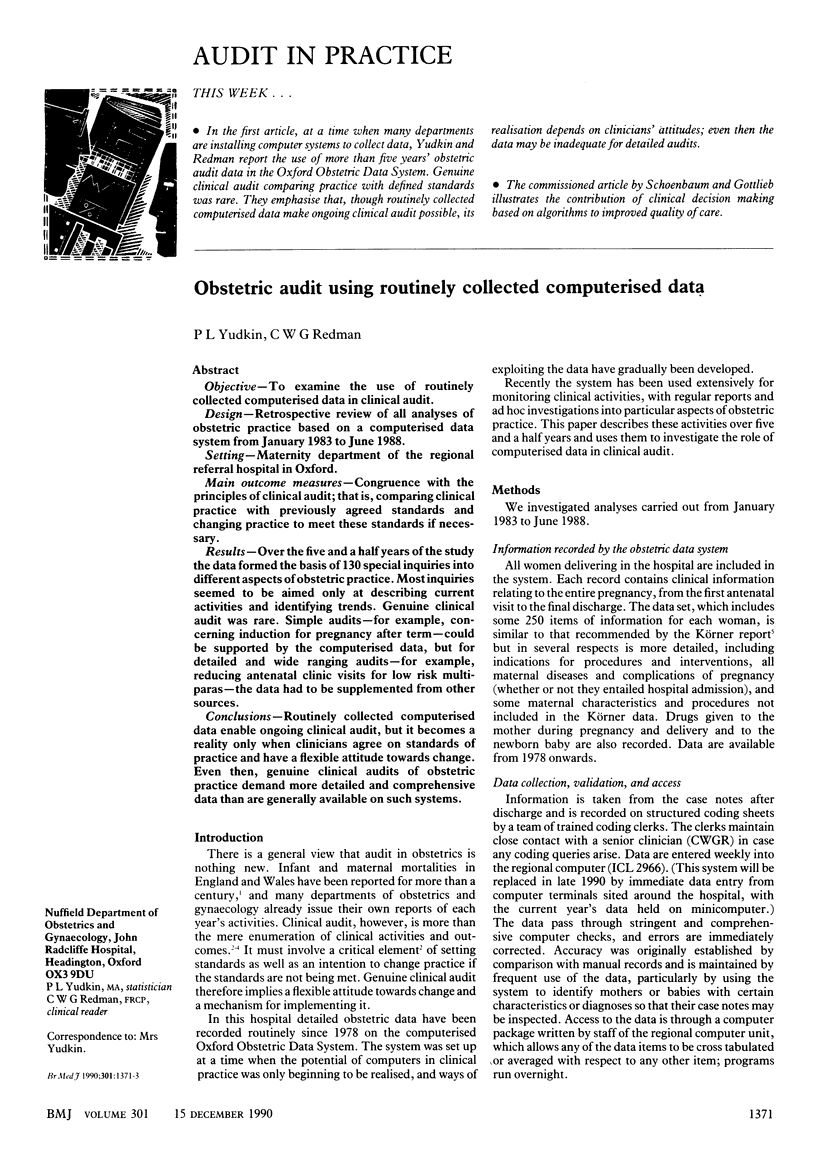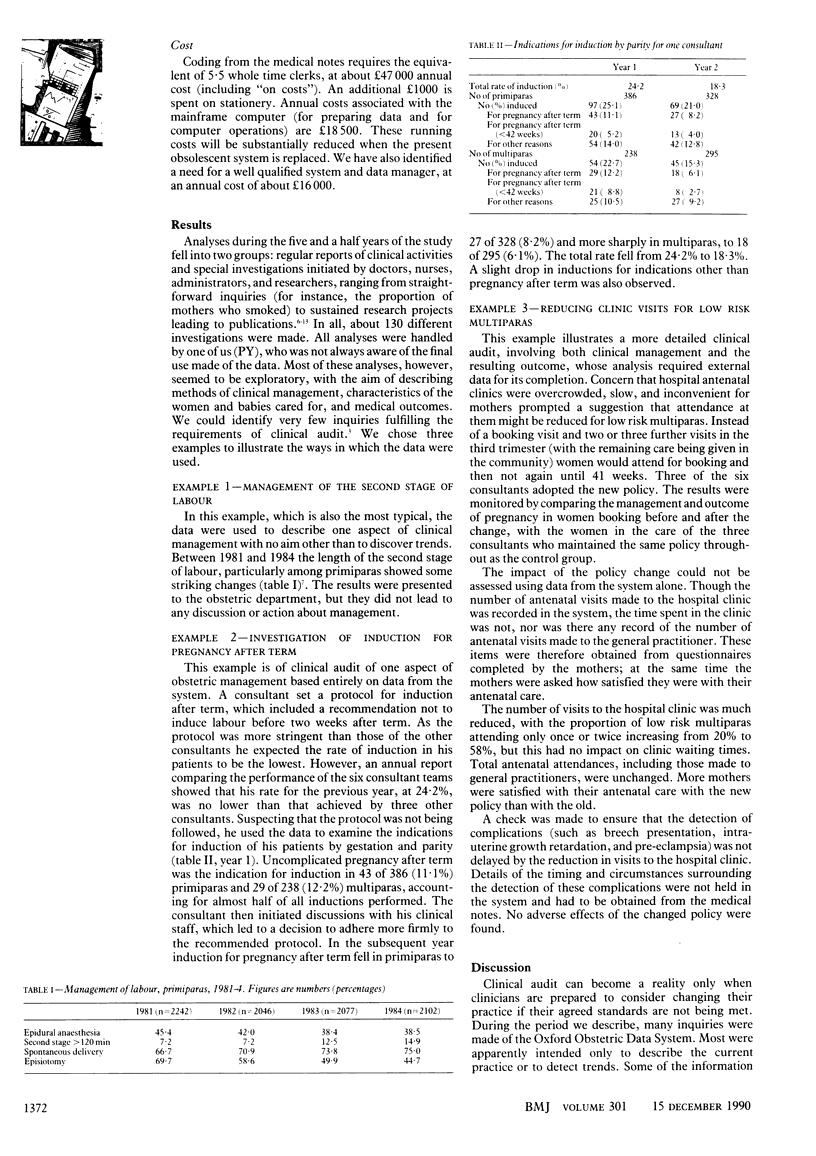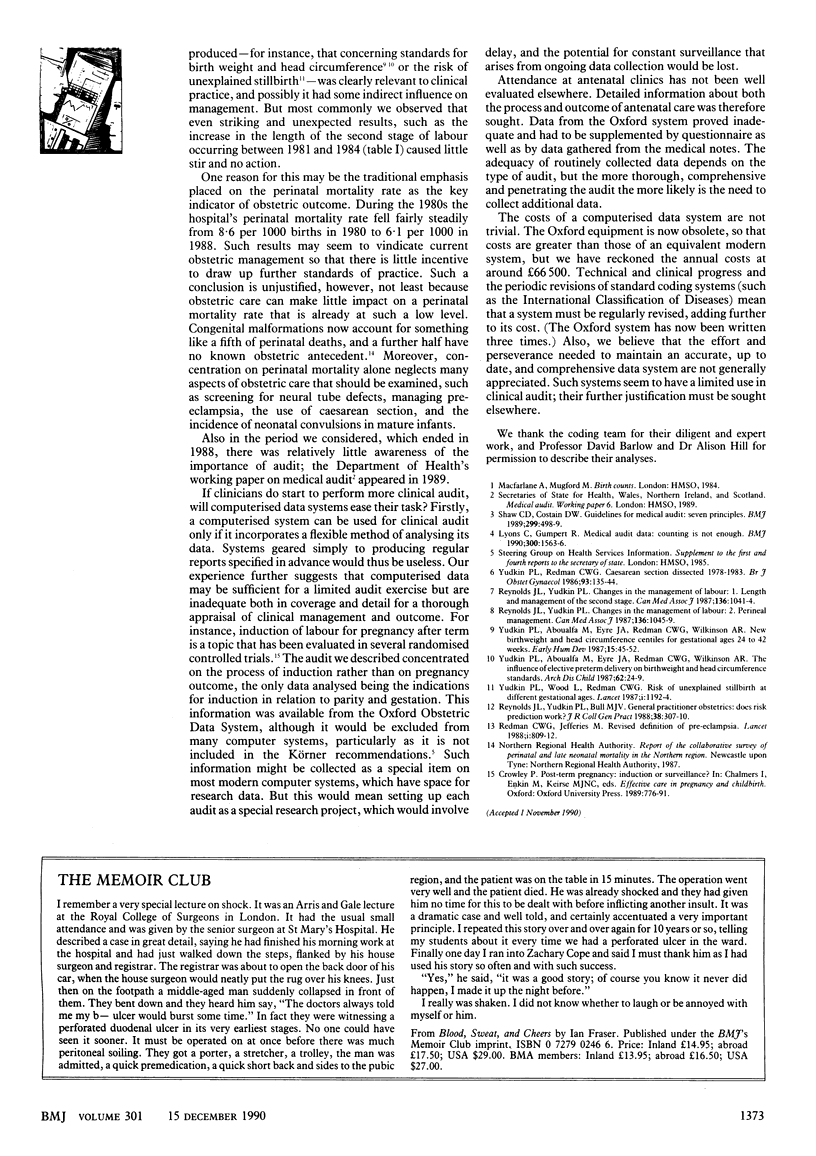Abstract
OBJECTIVE--To examine the use of routinely collected computerised data in clinical audit. DESIGN--Retrospective review of all analyses of obstetric practice based on a computerised data system from January 1983 to June 1988. SETTING--Maternity department of the regional referral hospital in Oxford. MAIN OUTCOME MEASURES--Congruence with the principles of clinical audit; that is, comparing clinical practice with previously agreed standards and changing practice to meet these standards if necessary. RESULTS--Over the five and a half years of the study the data formed the basis of 130 special inquiries into different aspects of obstetric practice. Most inquiries seemed to be aimed only at describing current activities and identifying trends. Genuine clinical audit was rare. Simple audits--for example, concerning induction for pregnancy after term--could be supported by the computerised data, but for detailed and wide ranging audits--for example, reducing antenatal clinic visits for low risk multiparas--the data had to be supplemented from other sources. CONCLUSIONS--Routinely collected computerised data enable ongoing clinical audit, but it becomes a reality only when clinicians agree on standards of practice and have a flexible attitude towards change. Even then, genuine clinical audits of obstetric practice demand more detailed and comprehensive data than are generally available on such systems.
Full text
PDF


Selected References
These references are in PubMed. This may not be the complete list of references from this article.
- Lyons C., Gumpert R. Medical audit data: counting is not enough. BMJ. 1990 Jun 16;300(6739):1563–1566. doi: 10.1136/bmj.300.6739.1563. [DOI] [PMC free article] [PubMed] [Google Scholar]
- Redman C. W., Jefferies M. Revised definition of pre-eclampsia. Lancet. 1988 Apr 9;1(8589):809–812. doi: 10.1016/s0140-6736(88)91667-4. [DOI] [PubMed] [Google Scholar]
- Reynolds J. L., Yudkin P. L., Bull M. J. General practitioner obstetrics: does risk prediction work? J R Coll Gen Pract. 1988 Jul;38(312):307–310. [PMC free article] [PubMed] [Google Scholar]
- Reynolds J. L., Yudkin P. L. Changes in the management of labour: 1. Length and management of the second stage. CMAJ. 1987 May 15;136(10):1041–1045. [PMC free article] [PubMed] [Google Scholar]
- Reynolds J. L., Yudkin P. L. Changes in the management of labour: 2. Perineal management. CMAJ. 1987 May 15;136(10):1045–1049. [PMC free article] [PubMed] [Google Scholar]
- Shaw C. D., Costain D. W. Guidelines for medical audit: seven principles. BMJ. 1989 Aug 19;299(6697):498–499. doi: 10.1136/bmj.299.6697.498. [DOI] [PMC free article] [PubMed] [Google Scholar]
- Yudkin P. L., Aboualfa M., Eyre J. A., Redman C. W., Wilkinson A. R. Influence of elective preterm delivery on birthweight and head circumference standards. Arch Dis Child. 1987 Jan;62(1):24–29. doi: 10.1136/adc.62.1.24. [DOI] [PMC free article] [PubMed] [Google Scholar]
- Yudkin P. L., Aboualfa M., Eyre J. A., Redman C. W., Wilkinson A. R. New birthweight and head circumference centiles for gestational ages 24 to 42 weeks. Early Hum Dev. 1987 Jan;15(1):45–52. doi: 10.1016/0378-3782(87)90099-5. [DOI] [PubMed] [Google Scholar]
- Yudkin P. L., Redman C. W. Caesarean section dissected, 1978-1983. Br J Obstet Gynaecol. 1986 Feb;93(2):135–144. doi: 10.1111/j.1471-0528.1986.tb07878.x. [DOI] [PubMed] [Google Scholar]
- Yudkin P. L., Wood L., Redman C. W. Risk of unexplained stillbirth at different gestational ages. Lancet. 1987 May 23;1(8543):1192–1194. doi: 10.1016/s0140-6736(87)92154-4. [DOI] [PubMed] [Google Scholar]


